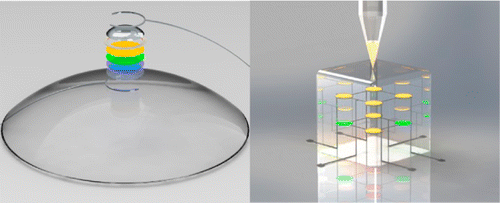
Researchers at Princeton University have developed a technique for 3D printing multiple materials that could prove quite interesting.
The problem being solved is the inability to mix unlike materials in a single print. They say:
To date, 3D printing has been limited to specific plastics, passive conductors, and a few biological materials. Here, we show that diverse classes of materials can be 3D printed and fully integrated into device components with active properties.
And so they’ve demonstrated the viability of their new process by “interweaving” five different materials using micro fabrication:
- Emissive semiconducting inorganic nanoparticles
- Elastomeric matrix
- Organic polymers as charge transport layers
- Solid and liquid metal leads
- UV-adhesive transparent substrate layer
But wait, this is the best part: the demonstration object they attempted to build was Quantum Dot based LEDs, and they demonstrated the ability to print them on a curvilinear surface. This means the process could theoretically enable 3D printing of contact lenses with embedded displays.
Such devices could be revolutionary in a way that Google Glass was not. When you’re wearing Google Glass, everyone knows it and social conditions change. However, QD-LED equipped contact lenses might not be detectable.
Via ACS

